
The Stevens 320 Pump shotgun, chambered in 20-gauge. This makes for a soft-recoiling, yet powerful home defense shotgun. Oh, and all for an MSRP of only $264.
For more information, visit https://www.savagearms.com/firearms/model/stevens320pump.
To purchase a Stevens 320 Pump on GunsAmerica.com, click this link: https://www.gunsamerica.com/Search.aspx?T=Stevens%20320%20Pump.
I’m thinking a 20-gauge shotgun for home defense is kind of like Miller Lite. You know, all the great taste, but with half the calories.
If you’ve fired different types of shotguns, it’s obvious that recoil can be all over the map. Some load and gun combinations are relative pussycats, allowing one to fire hundreds of rounds per day with no ill effect. Others make you want to start sticking safety pins to your shirt and run for the nearest safe space. With recoil in mind, I got an itch to check out a 20-gauge pump shotgun for home defense.
Enter the Stevens 320 Pump pump-action shotgun. It’s simple, functional, and best of all, affordable.
SPECS
- Chambering: 20 Ga.
- Barrel: 18.5 inches
- OA Length: 38.25 inches
- Weight: 7 pounds
- Stock: Synthetic
- Sights: Ghost ring, fiber optic front
- Action: Pump
- Finish: Matte black
- Capacity: 5+1
- MSRP: $264
A Quick Tour of the Stevens 320
As you might expect from a defensive shotgun, it looks tactical and very well might scare those who require safe spaces after controversial elections. It’s all black, with a polymer stock, fore-end and pistol grip. The stock and pistol grip are molded as a single unit so that any fit adjustments will move the pistol grip as well. The stock has a soft rubber butt pad that is 5/8 to ¾ of an inch thick, depending on where you measure. While it’s definitely a personal preference issue, I prefer a pistol grip on a defensive shotgun, mainly because I find them easier to handle both while shooting and administratively. If necessary, you can easily let go with the support hand to open doors, access a cell phone, get ammo, or maybe a midnight snack, all while supporting the shotgun in a ready position with your firing hand. The pistol grip also feels more natural to me as I don’t have to crank my wrist into an awkward angle. On the other hand, some people don’t like the feel of recoil when using the more vertical pistol grip style. Again, it’s a personal preference issue. Accordingly, Stevens makes the 320 model with a more traditional shotgun grip, and you can order that in either 12- or 20-gauge.
[one_half]
[/one_half]
[one_half_last]
[/one_half_last]
Out of the box, the Stevens 320 20-gauge has a magazine tube that holds five rounds, so if you’re one to keep a shell in the chamber, that gives you six total. I tried different birdshot, slug, and buckshot loads and there was enough space to hold a full five of everything I tried. That’s for 2¾-inch shells. This gun has a chamber cut to handle 3-inch shells too if you like, but I didn’t have any on hand to test magazine capacity.
The barrel is 18.5 inches long, or one half-inch over the legal minimum for shotguns. The overall length of the 320 is 38.25 inches.
The sights are definitely oriented to defensive use. The front sight is a fiber optic tube mounted atop a study sight base and protected with steel wings on both sides. The rear is a large-aperture ghost ring that’s adjustable for both windage and elevation. Two flathead screws control point of impact and, like the front sight, steel wings protect the rear sight. Just so you’re aware, you can order the 320 with a standard grip and bead sight too.
The fore-end is plastic and matches the finish on the stock and pistol grip. It’s got textured ribs reminiscent of the old corn cob style. It connects to the action via dual action bars, and the movement is solid with no lateral play or binding.
The safety is a crossbar style just forward of the trigger. I was able to move it from safe to fire mode with ease using my trigger finger and without altering my grip. The trigger itself is crisp with maybe 1/8-inch of take-up. I measured the pull weight at a consistent 5 ¾ pounds.
[one_half]
[/one_half]
[one_half_last]
[/one_half_last]
Last but not least, you’ll find two sling attachment points; a fixed one on the bottom of the stock and a swiveling one on the magazine tube end cap.
Shooting the 320
Oh, they joys of 20-gauge! I started off with some Winchester Universal 7 ½ shot shells. These have 7/8 ounces of lead with a muzzle velocity of 1,200 feet per second. These were pleasant to shoot from this seven-pound shotgun and recoil was minimal. I next moved up to some Federal Classic 3-Buck loads. These 2 ¾-inch shells pack 20-pellets of buckshot. To put that into perspective, a single 3-buck pellet measures about .25 caliber. While people sneeze at the .25 ACP as a defensive gun, I doubt anyone would be keen on being hit with 20 of them simultaneously. Last, I tried out some Winchester Defender Segmented Rifle Slugs. These ¾-ounce slugs are designed to fragment into three pieces shortly after impact and create diverging wound channels. I’ve tested the 12-gauge version of this load in ballistic gelatin, and it does exactly that. These slugs leave the barrel at 1,600 feet per second, so as far as recoil goes, it’s about as much as you’ll get with a 2 ¾-inch 20-gauge shotshell.
[one_half]
[/one_half]
[one_half_last]
[/one_half_last]
So how did it feel? Across the board with all the loads tested, I estimated felt recoil to be about half that of an “equivalent” 12-gauge load. Clearly, the shot and slug weights will differ between 12- and 20-gauge shells, so when I say “equivalent” I’m talking about average loads for birdshot, buckshot, and slugs. All in all, this is a very pleasant gun to shoot given its 20-gauge chambering and seven-pound weight. So was recoil really half? Hold that thought for a minute until we get to the math section.
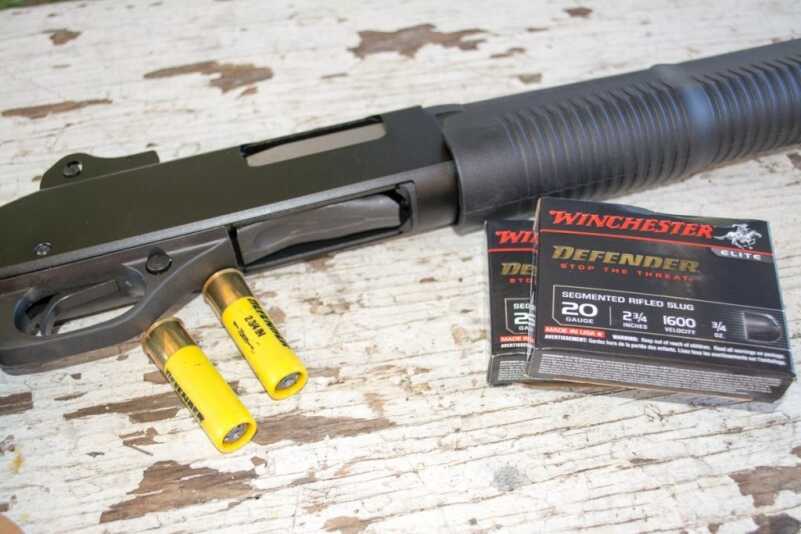
Even these 1,600 feet per second Winchester Defender Segmenting Slugs were relatively tame to shoot in the 320.
I shot slugs at a distance of 45 yards (as far as I could go in my particular shooting bay) and the slugs hit right at the point of aim when sighting with a six o’clock hold. Not that it matters as the sights are fully adjustable for windage and elevation, I was just pleasantly surprised that it was right on out of the box. The Federal buckshot loads patterned evenly from the cylinder bore barrel (there are no choke tubes on the model tested here) and from a distance of 10 yards, the pattern was about 13 inches in diameter. Patterns will vary widely depending on your specific choice of ammo, so be sure to test whatever load you choose so you know exactly where pellets are going and whether you need to make any sight adjustments.
[one_half]
[/one_half]
[one_half_last]
[/one_half_last]
One minor gripe I have with this gun is the placement of the slide release lever. If the fore-end is locked forward, and you haven’t fired a shot, you need to depress this lever to operate the pump action. It’s located on the left side of the receiver at the rear of the trigger guard. I may be a total spaz, but I can’t reach it without significantly breaking my firing grip, and I have reasonably large hands. Maybe that’s by design, but I would prefer to be able to operate all the controls easily from the firing position.

The crossbolt safety is just forward of the trigger while the slide release catch is behind on the left side.
To unload the magazine tube, you can simply cycle the fore-end and run shells through the chamber and out the left side ejection port. If you don’t want to do that, you can depress a shell catch lever inside of the magazine well. It’s not a particularly graceful move on this gun with its smaller 20-gauge well, but it’s doable. This negates the need to chamber and eject rounds if you’re more comfortable with that approach.
The Real Deal On Recoil
When I want to speak like a real, grown-up ballistics engineer, I totally cheat and plagiarize material from my buddy’s book. Andrew Chamberlain wrote The Cartridge Comparison Guide—:it’s a ballistic freak’s dream come true. Want to compare energy, momentum, and recoil in terms of real math? You can find all that in the guide. So I did.
[one_half]
[/one_half]
[one_half_last]
[/one_half_last]
Here’s how the math works comparing down range energy, momentum, and recoil between similar 12- and 20-gauge shotguns. For example purposes, we’ll assume that each gun weighs eight pounds and that we’re firing “average” #4 buckshot. For consistency of terminology, think of a rough analogy of the difference between energy and momentum like this. Foot-pounds of energy measures destructive power. A high-speed drill bit has lots of energy. Momentum measures the ability to move mass and penetrate. A bowling ball has lots of momentum. You really want both.
A 20-gauge launching one ounce of lead (24 pellets) at 1,100 feet per second generates 15.73 foot-pounds of recoil energy. An “average” 12-gauge #4 buckshot load with 28 pellets leaving the muzzle at 1,330 feet per second generates double the recoil, with 31.5 foot-pounds.
But what about energy on the receiving end? That same 20-gauge load develops 1,343.1 foot-pounds of energy to the target and 78.6 lbs-ft/second of momentum. That’s in the same ballpark as a .300 Winchester Magnum. Not too shabby.
Yes, a 12-gauge creates more energy at the target, a lot more, with 2,277.6 foot-pounds of energy and 110.2 lbs-ft/second of momentum. However, as we all know energy and momentum aren’t free, and you pay for that big time when it comes to recoil. That’s why many 12-gauge loads can whomp you with double the felt-recoil of a comparable load type in 20-gauge.
The Bottom Line
Here’s what choosing a gun like this chambered in 20-gauge instead of 12 allows you to do. You can get a simple, reliable, and inexpensive pump shotgun that won’t beat the hell out of whoever shoots it. Pumps are easier to build than semi-automatics, but with no “bleed off” of recoil energy from the action, you’ll feel it more when you shoot them. Since they’re simpler to make, they’re less expensive to buy. Also, with no finicky recoil or gas-operates action, they tend to function. If you consider the 20-gauge instead of 12, you also have a gun that anyone in the household can control and shoot. After all, getting shots on target is everything, and most people can do a better job of that with a gun they can control. It also helps to have a gun that’s not abusive as family members are more likely to practice with it.
I like this gun. Chambered in the smaller 20-gauge bore, handy to maneuver, and pleasant to shoot, even with full-power defensive loads. I’m asking the Stevens people if I can send them a check instead of returning this one.
For more information, visit https://www.savagearms.com/firearms/model/stevens320pump.
To purchase a Stevens 320 Pump on GunsAmerica.com, click this link: https://www.gunsamerica.com/Search.aspx?T=Stevens%20320%20Pump.


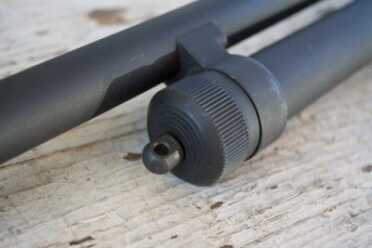
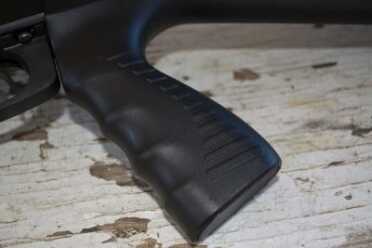

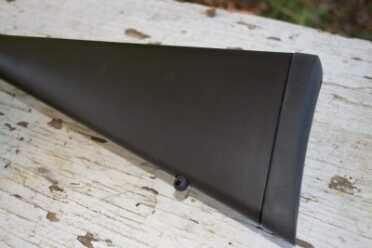
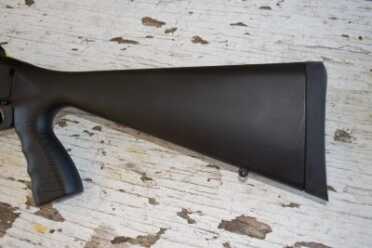
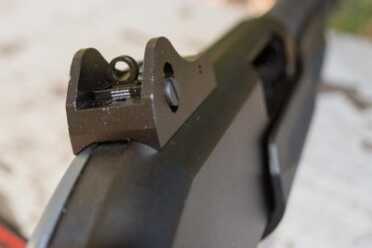
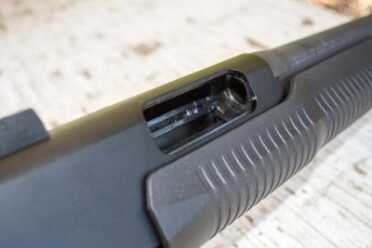
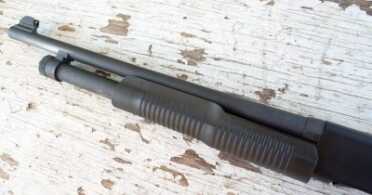
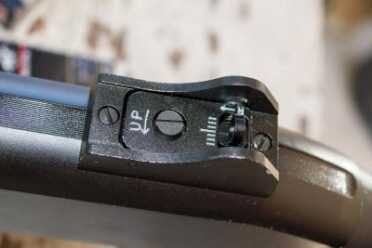
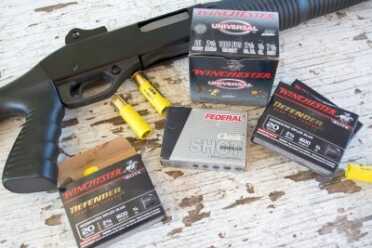
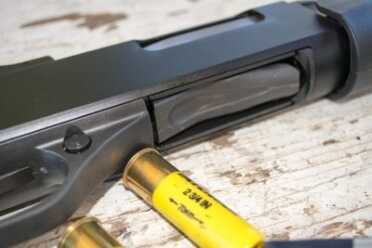
i purchased this 20 gauge for my husband for xmas. when h
e
i went to shoot it…no firing pin… how do i get one
thank you,
mary ann jacobs
Contact the company: https://www.savagearms.com/customer-support
please mention where the reviewed firearms are made. It’s important to know if we are supporting a domestic company and American workers.
As a former LEO, I prefer keeping a defensive pump shotgun in ‘Cruiser Ready’ position (fully loaded mag tube, hammer down on an empty chamber, safety ON). This is not possible with the 320
‘Left side ejection port’???
I have 3 Stevens shotguns. A 20 guage from the 70’s my dad gave me and more recently a 350 12guage and a 320 12guage. My old one worked like a dream from day 1 and the Model 350 I bought a few years ago is great. But I picked up a new Model 320 last year on a crazy Black Friday for $100 and in my opinion that’s about all it’s worth. It’s action is rough, the trigger sucks, the safety is stiff, and you have to slam it forward or it won’t lock and fire. I know you have to break them in but my 320 isn’t worth the ammo. I am glad they are getting more popular so that I can trade it for something better. These are just my opinions. Take them for what you think they are worth.
ON THIS GUN, IS THERE AVAILABLE AN EXTENSION TUBE ON THE MAGAZINE TO SOMEWHAT INCREASE THE LOAD???
ARE A PISTOL MODEL AVAILABLE TOO???
How can I buy your products if your picture links will not open??????
https://www.gunsamerica.com/Search.aspx?T=Stevens%20320%20Pump
Left side ejection port??
Good review of an interesting shotgun. I’m in complete agreement with you about the effectiveness of a 20ga for a home defense shotgun. However, I cannot stomach the idea of buying a shotgun made in China. Yes, it’s a world economy, but if we want to keep jobs in our country we all need to Buy American.
American workers are a hindrance to maximizing Wall Street corporate profits. The American financial ruling class and their governmental enablers make more money without manufacturing jobs in the US. People might want to realize these jobs are never going to return.
I have a Stevens 12 Ga. pump with a Pistol Grip. Like it a lot! It doesn’t have the Nice Sights though!
And I’m going to guess it’s ‘illegal’ in Kalifornia?
I’m curious to see what will happen – if anything – if Trump starts addressing all the unconstitutional acts the good politicians and idiot citizenry have ‘passed’.
Actually, j am pretty sure that even us poor souls stuck here in the USSK can get these. Check with your local big 5 store.
Great price for the perfect HD shotgun. Simple easy to use. I perfer simplicity in my home defense firearms. This fits the bill perfectly. And at this price, add a scope mount and a decent enough optic, and take it deer hunting. If it gets beat up and marked with scratches it wont bother you. Better this fall outa the tree stand then my now unavailable Rem. 700 BDL in near perfect condition. Just say’n.
We sold a lot of these at the shop, and surprisingly, Stevens being Savage’s budget line of firearms, I don’t recall them coming back to the shop with issues. I was always impressed with the features for the price. For the budget minded, and those with recoil sensitivity, this is a good choice. If I was budgeted for a Hi Point 9mm for my home defense needs, I would go ahead and save an extra $100, and put my trust in the Stevens 320. Lot of bang for the buck.
Poor reviewer!
I found no mention of the stock length of pull
The guns needs a screw in choke option.
No it doesnt…what for to take turkey hunting? Make a better hit % on those handicap targets maybe? Certainly not for 250 bucks it doesn’t! That would make it 325 of take off the sights & stock set. A serviceable home defense gun that anyone can operate for 250 sounds like a pretty solid recipe for success to me!
Decent gun and review. On that slide release catch, how exactly did (do) you do it, assuming right-handed? Reaching over and down with your thumb, or under and up with a finger, has to be inconvenient and awkward…got to be a better placement.
IMO 20-gauge is for smaller people and those especially sensitive to recoil though there are lots of reduced-recoil 12-gauge loads available. 12-gauge ammo is more abundant and thus usually cheaper. So are the guns (not that it matters so much with a $264 MSRP) because they make lots of them and they’re often bait-&-switch guns in chain store sale flyers. No, they don’t have the elegance of shotguns costing a helluva lot more but they’re effective for intended purpose. You forgot to mention the loud and clunky but unmistakable racking sound made by low-cost pumpers like the 320. Just that sound coming from the dark will be all you need to burn some rubber off the soles of their sneakers.
If you want to know why the slide release is located where it is then you’ll have to ask Winchester since it’s pretty much a Model1200 design that Stevens uses. Not that i fault them for doing so because it’s a good and proven model that Winchester no.longer makes.
I agree, and it it really the worst thing in the world to release your firing grip when youre about to unload?
YOUR ENERGY FIGURES ARE WAY OFF FOR THE 300 WIN MAG. ANY OF THE LOADS FOR THE
WIN MAG WILL GENERATE OVER 3000 FOOT POUNDS AT THE MUZZLE!
Do the ft/lbs change from the muzzle to the target? The article doesn’t mention ft/lbs at the muzzle, only at the target.
Yes, the drag from air reduces the velocity (ft/sec) and hence the momentum (ft-lbs/sec) and energy (ft-lbs). This effect is stronger with smaller shot sizes, and the least strong with slugs. And I don’t think you can directly compare recoil energy and the energy of the projectile(s) at the muzzle or the target. (Certainly the numbers differ by about 100x.) Other factors like the mass of the gun and how the ejected gases move on firing can change things a lot here.